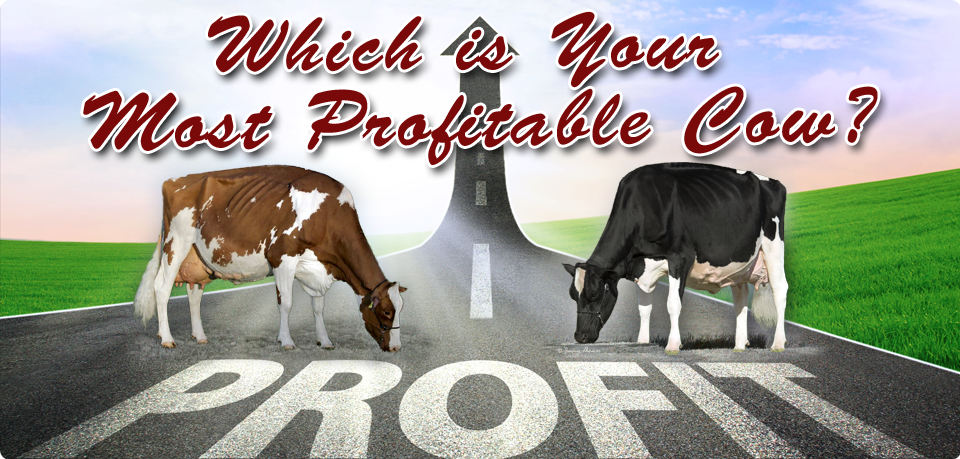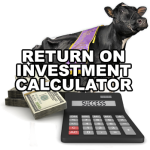Early in my working career, working as a dairy cattle improvement specialist, I was invited to take part in a dairy producer education day with the theme of “Which is your most profitable cow?” That morning program had been organized by an Agriculture Agent in an area not far from my home farm. This effective educator had had a long career as a County Agent, specializing in farm bookkeeping and the use of records on the farm. His plan for the day was to have a variety of speakers who would bring varying points of view on cows that could make a profit. The day had over 150 people in attendance. He had done a good job of getting the crowd out. He wanted producers to go home with ideas on genetics, feeding, management and record keeping. I, personally, learned a great deal from the points of view shared by both the speakers and the crowd.
Is it the show kind?
The lead-off speaker was a well known showman who two years previously had purchased a tall, deep bodied, sharp chined, good uddered four year old cow with feet and legs that were not the best. He had worked with the cow to get her to walk just right in order for her not to show off her questionable feet and legs. He had done such a good job that the previous year she had been Grand Champion at the Royal, All Canadian and eventually her daughters would also do very well at Madison. Everyone in the crowd knew what he had paid for the cow, as she’d been purchased at a public auction. So the excellent showman and cow developer described how he would be able to sell sons of her to AI and daughters and granddaughters to foreign countries. That for him was his most profitable cow, yet for the vast majority in the crowd they could not personally identify with this showman. Buying cows in the rough and developing them was not in their expertise. The speaker did not get any questions.
Is it the balanced kind?
The next speaker was the sire analyst from a successful AI coop, who had recently been designated as an Official Judge and who would go on to be a very successful international dairy cattle judge. He spoke about bulls that can consistently sire daughters that can win in the show ring and at home can produce very good volumes of milk with a minimum of 3.8% butterfat. His speech mainly dealt with how a sire analyst uses his knowledge to search the breed office records before he goes on-farm to check out all members of the family of young sires already on the ground and that could pass health tests to enter into the young sire sampling program. Many in the crowd were interested in his presentation as dairy cattle breeders always want to know who the next hot bull is. However the producers present did not go away with any gems of knowledge on which would be the bull they should start using. Balancing strengths and limitations gives an average but not necessarily profit.
Is it the index kind?
At that time, nearly four decades ago, cow indexes for production traits had just been produced by genetic researchers and were starting to be used by some early adopters. So the third speaker was a recent college graduate whose family farm had decided to invest in two cow families that had placed cows at or near the top of the index list. This speaker, although not long in the tooth as a cattle breeder, was eager, entertaining and informative on what he had learned in buying into the cow families. He spoke of BLUP and the need to treat all cows in a herd in a like manner for accurate indexing. However few in the crowd comprehended the value or benefit of cow indexing or how that could be translated into cow profitability. From the questions asked of this speaker, it was obvious that there were more doubters than believers in the crowd. By the way, this speaker through sound business and breeding decisions and the use of ET has developed an excellent herd of high performing cows earning him a Master Breeder designation. But, on that day, his speech did not resonate with the crowd on what should be their most profitable cow.
Can you use a pencil to calculate?
I was the fourth speaker on the program. Newly out of graduate school where I had developed the “Dollar Difference Guide to Dairy Sire Selection” I was to speak about that new listing service. I focused my presentation on how to use the guide when selecting proven bulls to produce profitable cows. The formula was similar to the present day Net Merit index only it did not include traits beyond milk and fat. The Dollar Difference would eventually be replaced by the Canadian LPI system for ranking both males and females. I received many questions both in support and questioning how dairy cattle could be bred using just numbers and not the human eye. In fact the crowd all on their own debated the merits of selecting for yield only, selecting for the balanced Canadian kind or the merits of selecting only for the recently adopted Canadian Holstein true type model. To say the least I learned much that day about delivering a speech, about getting the crowd involved in the discussion and how to react as a speaker to both support and criticism. Yet, in the end, I likely did not help producers when they went home to breed profitable cows.
What works in the barn?
The final speaker was a quiet middle aged man, who dairy farmed locally with his wife. They milked thirty cows in an older tie stall barn, having taken over the farm when his father had been killed in a farm accident. They were raising a family of five very bright children, two of whom were already in university. They were devoted pupils of the county agent’s farm records and bookkeeping club. I had heard many in the crowd during the coffee break time question what this man could bring to the crowd as he seldom attended cattle shows, their children’s 4H calves were always at the bottom of the class, he did not attend breed meetings and they only owned a few purebred cows. He started his speech with an explanation of how people learn and then proceed to describe his most profitable cow. She always stood in the same stall at the far end of the barn. It had a steel plate as the floor over the stable cleaners. She was a purebred Holstein classified Good 76, milked ten percent below the herd average, gave milk of 5% butterfat, ate mainly the feed swept to her that the other cows did not eat, never kicked, was loved by his children, first calved at 24 months, conceived every time on first AI service, had never seen the vet, never had mastitis and was now 72 months old milking in her fifth lactation. Well the crowd, almost laughing, thought he was joking. He wasn`t! For him she was his most profitable cow. Obviously the county agent had selected him to speak because his views were different from what all of the breed, DHI and AI recommendations would be and from what the other speakers thought to be the most profitable cow.
Lesson learned?
At the end of the day, I spoke with many producers present and the buzz was about the final speaker. They remarked on how he had made the day beneficial for them because he had shared real life practical experience with them. His way of farming meant breeding cattle, raising a family and that cows were present on farms to bring financial returns to the farm and not just to look pretty. These were all points I heard mentioned by the crowd. Yes profit is in the eye of the beholder. Dairy cows exist to feed the world. And yes every cow does not fit every dairyman’s view of the most profitable cow.
The Bullvine Bottom Line
Every farmer and every farm has their own individual situation. One type of cow is not the most profitable for everyone. But it is important that every cattle breeder takes the time to decide which, for them personally, is the most profitable cow. And then it’s equally important that they take the next step and breed for that type of cow. Your reality is the source for your profit..
What has your experience been? Please share in comments box below.
Not sure how much to spend on that great 2 year old?
Want to make sure you are investing your money wisely?
Download our Dairy Cow Investment Calculator.


















Leave a Reply
You must be logged in to post a comment.